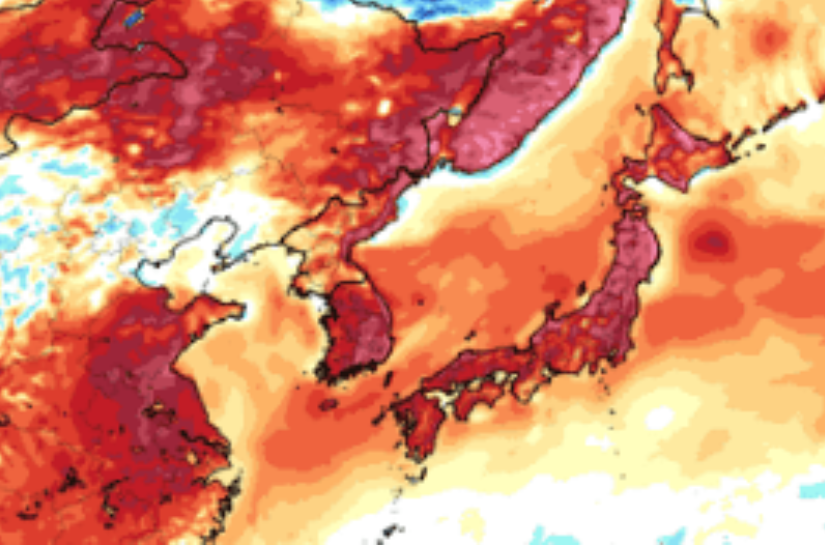
South Korea is reeling under an unrelenting and dangerous heatwave, with record-breaking temperatures and suffocating humidity threatening lives across the region. On July 4, 2025, the city of Ulchin reached an astonishing 37.8°C, tying its all-time heat record first set on 8 August 2013.
This extreme reading comes just days after Ulchin broke its all-time June record with 36.8°C, showcasing the unprecedented intensity and duration of this summer’s heatwave.
Hottest Night Ever in South Korea
Adding to the danger, overnight temperatures have shattered records — making recovery from the daytime heat almost impossible. In Kangeung, South Korea recorded a minimum temperature of 30.4°C, marking the hottest night in the country’s history.
This phenomenon of “tropical nights”, where nighttime temperatures stay above 25°C, is now spreading widely — but this level of extreme, unbroken heat even after sunset is something meteorologists are calling “life-threatening.”
Humidity and Dew Points: A Silent Killer
What sets this East Asian heatwave apart is not just the temperature, but the extreme humidity and deadly dew points, which push the apparent or “feels like” temperature well above 50°C in some regions.
Meteorologists stress that this heatwave is “far worse than what Europe has experienced,” due to the combined burden of tropical air masses and high coastal humidity that makes thermoregulation nearly impossible, even for healthy individuals.
High Minimums Spread Across East Asia
Record-breaking minimum temperatures were also reported across the Korean Peninsula and Far East Russia:
South Korea:
- Sogwipo: 25.9°C
- Incheon: 24.7°C
North Korea:
- Pyongyang: 24.5°C
- Nampo: 24.0°C
- Wonsan, Sariwon, Anju: 23.8°C
- Huichon: 23.1°C
- Hamheung: 22.9°C
- Senbong: 22.7°C
- Supung: 22.6°C
- Kimchaek: 22.5°C
- Chongjin: 22.4°C
Russia (Far East):
- Bikin: 22.3°C
- Agzu: 18.8°C
A Region-Wide Climate Emergency
The current East Asia heatwave is being described as the worst in recorded history for the region — both in terms of intensity and geographic scale. The Koreas, Japan, eastern China, and the Russian Far East are all under extreme heat advisories, with some locations reporting “dangerous” and even “uninhabitable” heat indices during peak afternoon hours.
Authorities are urging people to:
- Avoid outdoor activity during daylight hours
- Stay hydrated
- Check on vulnerable populations
- Use air conditioning when possible
Hospitals across the region are seeing spikes in heatstroke cases, and health officials warn that fatalities will rise sharply if conditions persist.
A Glimpse Into the Future?
Climate scientists point to this heatwave as a disturbing preview of future summers under ongoing global warming scenarios. With urban heat island effects, population density, and rising sea temperatures contributing to more persistent tropical conditions in East Asia, the region is facing a growing threat to health, infrastructure, and agriculture.

Detail.


























